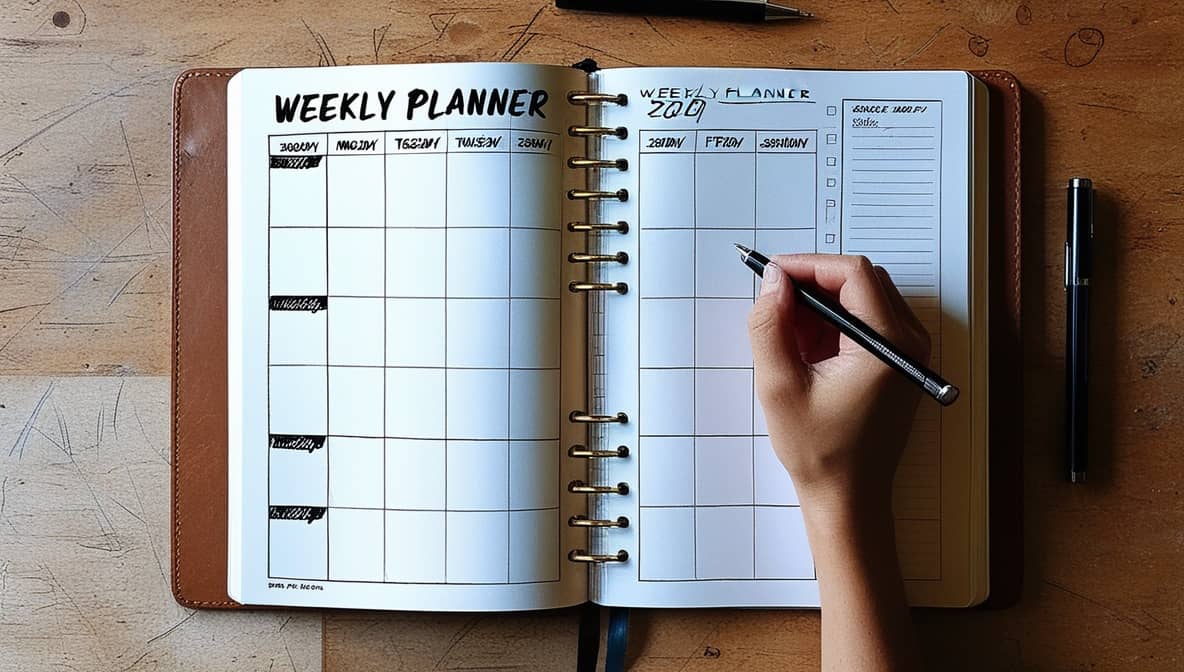Design Your Week: Achieve Balance and Productivity

Did you know that a week is the only time frame that was created by people? The week was created to give us a sense of rhythm and time to rest. The idea is simple: work for 5-6 days, then take some time off.
To create a productive week, it’s best to follow a ritual called “Weekly Review & Planning”.
Once a week, allocate 2-3 hours on your schedule to review the past week and create a plan for the upcoming week.
Creating a weekly plan can be an effective way to stay organized and make the most of your time.
Benefits of creating a weekly plan
Here are a few reasons why it’s important to create a weekly plan:
- It helps you prioritize your tasks:
- By mapping out your tasks for the week, you can see at a glance what needs to be done and prioritize your work accordingly.
- It helps you stay on track:
- A weekly plan can help you stay focused and avoid getting sidetracked by unimportant tasks or distractions.
- It allows you to allocate your time effectively:
- By breaking your tasks down into smaller, manageable chunks and scheduling them throughout the week, you can make better use of your time and avoid feeling overwhelmed.
- It helps you manage your energy:
- A weekly plan can help you pace yourself and avoid burnout by ensuring that you have enough time for rest and relaxation in addition to work.
As you can see, creating a weekly plan can help you stay organized, make progress on your goals, and manage your energy levels more effectively. It can also help you identify areas where you may be able to streamline your work or delegate tasks to others.
How to create a weekly plan?
Here are a few steps you can take to create an effective weekly plan:
- Review your long-term goals:
- Before you start planning your week, take a moment to review your long-term goals. This will help you align your weekly tasks with your big goals.
- Review your calendar:
- Look at your upcoming appointments, meetings, and commitments to see what you have planned for the week ahead.
- Identify your most important tasks:
- Make a list of the tasks that are most important for you to accomplish during the week. Prioritize them based on their level of importance and urgency.
- Create a schedule:
- Use your calendar and task list to create a schedule for the week. Be sure to include time for work, rest, and leisure.
- Break down large tasks:
- If you have a large task that cannot be finished in one day, break it down into smaller, more manageable tasks and schedule them throughout the week.
- Use the Pomodoro Technique:
- Use the Pomodoro Technique to break up your workday into focused 25-minute intervals with short breaks in between. This can help you to stay focused and avoid burnout.
- Review and adjust:
- At the end of the week, take a moment to review what you’ve accomplished and make any necessary adjustments to your plan for the following week.
- Use the tools you have:
- Use the daily planning tools you have chosen to keep track of your plan, for example, calendar, to-do list apps, time-tracking apps and any other tool that can help you with the planning and management of your day.
By following these steps, you can create an effective weekly plan that will help you stay organized, focused, and on track to achieving your goals.